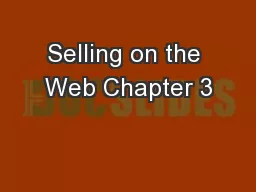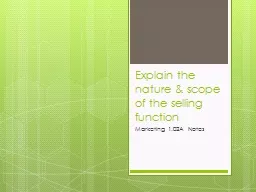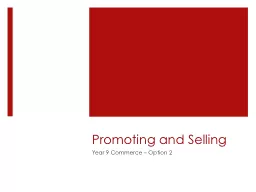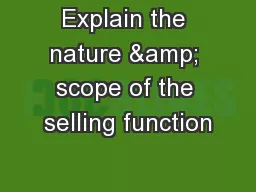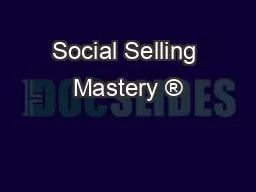PPT-Selling on the Web Chapter 3
Author : sherrill-nordquist | Published Date : 2018-03-21
1 Cengage Learning 2015 Learning Objectives In this chapter you will learn about What a revenue model is and how companies use various revenue models How some companies
Presentation Embed Code
Download Presentation
Download Presentation The PPT/PDF document "Selling on the Web Chapter 3" is the property of its rightful owner. Permission is granted to download and print the materials on this website for personal, non-commercial use only, and to display it on your personal computer provided you do not modify the materials and that you retain all copyright notices contained in the materials. By downloading content from our website, you accept the terms of this agreement.
Selling on the Web Chapter 3: Transcript
Download Rules Of Document
"Selling on the Web Chapter 3"The content belongs to its owner. You may download and print it for personal use, without modification, and keep all copyright notices. By downloading, you agree to these terms.
Related Documents

